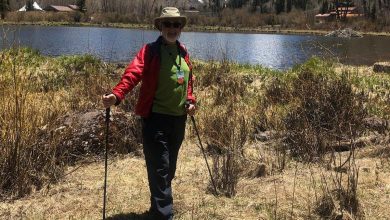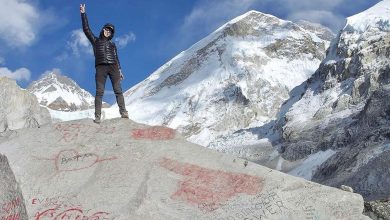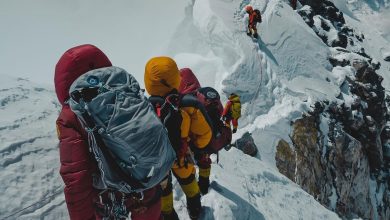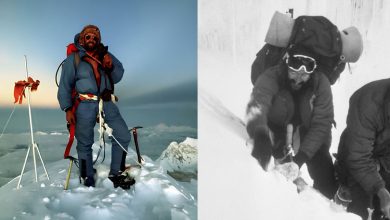Mick Burke: 1975 Expedition And Tragic Missing Of English Mountaineer

Do you know Mick Burke? If not, this article is about to take a deep dive into the life of a remarkable mountaineer.
Michael Burke also known as “Mick” Burke was an extraordinary mountaineer who converted his passion and love for mountains and adventure into a blooming career. Along with being a remarkable mountaineer, he also had a great career in the field of cameras. He was a mountaineer and climbing cameraman.
His career came to its heights during the era of 1960s and 1970s. Despite his tragic death, the mountaineering community and the new generations of cameramen appreciate his career and the pathway he paved.
Mick Burke- Background
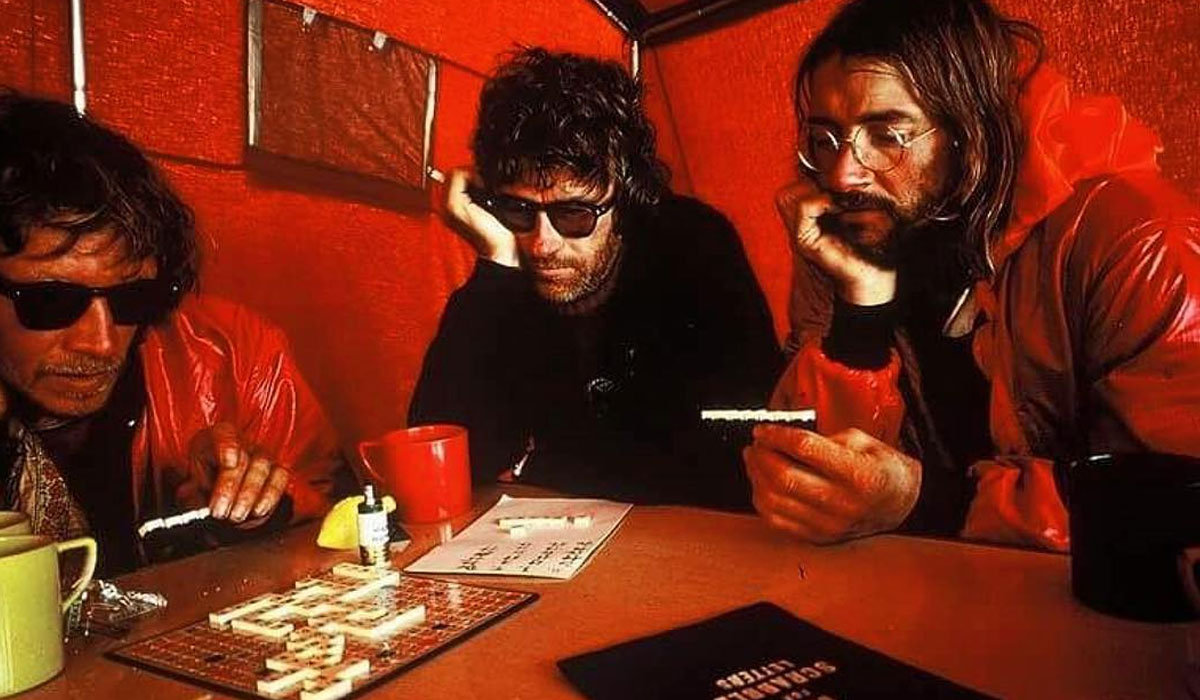
The year Mick Burke took his first steps in the world was in the year 1941. He was born as an Englishman in the country of England, United Kingdom.
According to sources, Mick Burke belonged to a small town called Abram in the United Kingdom. His town was near another famous town called Wigan. Wigan is a town in Greater Manchester,Englandd. The town is situated on the River Douglas. The town is actually in the midway between the two cities of Manchester and Liverpool.
It is said that Mick Burke showed a keen interest in mountains and climbing at a young age. In Fact when he was just a teenager. He began his career in climbing at an early age of 5. It is also said that he was a member of a club which consisted of members highly interested in mountaineering. The club was called “Wigan Rambling and Climbing Club”.
During that time in his life he met Jo Moran. Jo Moran was an English ornithologist, wildlife photographer, mountaineer and climber. Jo Moran was the person who took Mick Burke on his first hike up to 1800 feets in Pendle Hill. Pendle hill is in the east of Lancashire, England located near the towns of Burnley,Nelson,Colne, Brierfield, Clitheroe and Padigam. It is an average heighted summit 557 meters above sea level which translates to 1,827 feets.
Career of Mick Burke
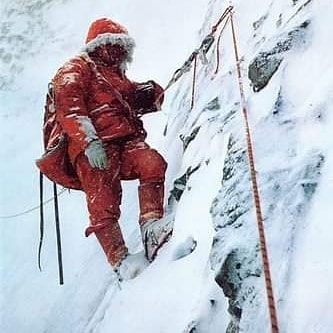
Burke’s famous friend and fellow mountaineer himself Jo Moran was found saying to the media that Mick was never a natural climber, in fact the only reason he had a remarkable career in mountaineering was because of his total dedication and perseverance. Moran also stated that Burke’s application to the sport was tremendous and applaudable.
Despite having not so long a career, Burke had created his own pathway of climbing journeys in the United Kingdom as well as the United States of America.
It is a commendable job for someone who is not naturally born with the talent of mountaineering. His career is a lesson for all of us that dedication and willingness to be good at something is more important than being naturally “talented”.
The region that Burke had shown a lot of interest were the Alps. The Alps is a mountain range located in the continent of Europe. The Alps are stretched in multiple countries across the whole Europe, that is the eight countries. The eight countries include some of the most famous and iconic countries of Europe like France, Switzerland, Italy, Austria, Germany, Slovenia, Monaco and Liechtenstein. For Mick Burke, an Englishman, the closest the Alps came to were in the northern French territory.
According to Mick Burke’s close fellows in mountaineering, Burke even “established” new routes in the Alps.
Burke, as a dedicated climber, trained his skills in the incredibly challenging and demanding environments and terrains of the United Kingdom, improving his skills on the traditional as well as sport mountain climbing.
Deciding to venture on a new chapter, Burke went all the way through the Atlantic to the vast and diverse landscapes of the United States of America. He carved his name in the mountains of the USA through his unwavering dedication and love towards the career he pursued.
Expanding to The Cameras
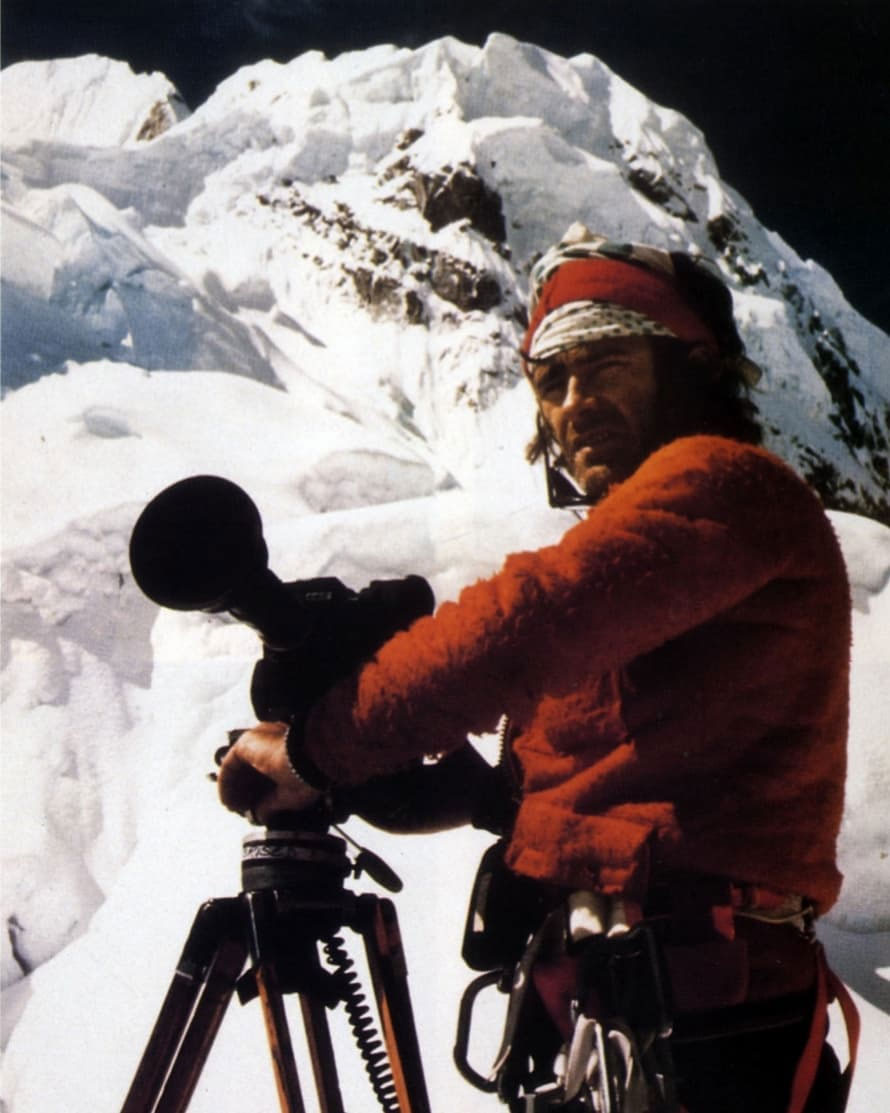
As you take a deep look at Mick Burke’s career, you can find that Burke did not limit himself to just climbing the mountains, he ventured into another successful career in cinematography. He did ultimately return to the career he first put his steps in, climbing and mountaineering but this time with a camera in his hands and a new skill to add into the journeys through the mountains.
During the decades of the 1960s and 1970s, Burke accompanied by his camera decided to further expand his horizons. He went on an array of series of British based mountaineering climbs and expeditions. He left his mark on all the mountains he climbed.
He well documented his journeys in his cameras and some of those journey clips were also commercialized and presented in front of audiences.
According to close sources, Burke was glad he ventured further from mountaineering into the world of cameras and more so blending both of the things he loved together. This career shift was a crucial part of his remarkable career that his followers look up to. It changed the trajectory of his life.
Burke is said to be someone who was an extremely curious man. That was one of the major reasons why he did not solely focus on mountaineering but also made a decision to become a cameraman.
Both mountaineering and filmmaking are extremely demanding and challenging tasks to do but Burke not only pursued both but excelled in both of them.
During his formative years Mick Burke mastered his camera skills and learned how to capture the tiny details of mountains and the whole mountaineering experience despite traveling through challenging and harsh terrains of the United Kingdom and the United States of America.
After a few years of making his name as a reputable cameraman, Mick Burke was asked to join a series of British based mountaineering expeditions in the 60s and 70s. These expeditions and climbs were most commonly led by other extremely famous climbers like Chris Bonington.
Chris became the subject of Burke’s films. Mick Burke started to capture Chris and his own expeditions in the cameras.
One notable thing about the photography of Burke was that his subject of focus were not just the mountains that he climbed along with his friends. The major subject of focus was the hardships that mountaineers have to face every time they climb , at every moment of the climb, the risks they have to cut through.
His camera captured the essence of beauty, struggle and the sheer dedication of the climbers following their passion.
View this post on Instagram
Annapurna Expedition
It was the year 1970s, both Burke and Bonington had made a reputable name in the field of mountaineering. That particular year both these climbing legends decided to face the challenges of the great Annapurna. Mount Annapurna is a part of the infamous Himalayan range of Nepal.
Annapurna stands tall as the tenth highest mountain peak of the world. Climbing Annapurna is not a piece of cake as Annapurna has made its name for being one of the most difficult climbs in the entire world. Even more difficult than the tallest mountain in the world, Everest itself.
Deciding to go and climb one of the deadliest peaks like the Annapurna was a daunting challenge for both Mick Burke and Chris Bonington. This climb would not only test both of their dedication towards climbing in harsh challenges but also tested the camera abilities of Mick Burke.
Burke’s lens captured the resilience of mountaineers and the challenges faced in the deadly peaks, keeping their life at stake every moment spent there.
The expedition however did not get to reach the top of the summit but it definitely did leave a mark on the journey of mountaineering and more so because of the captures by Mick Burke’s cameras.
Everest Expedition
The incomplete success of Annapurna did not make the team lose their hopes but in fact motivated them to challenge themselves even more further.
This time the team decided to challenge the mighty Everest which happens to be the tallest mountain in not just the Himalayas but across the entire world. Standing incredibly tall at 8848 meters, Mount Everest has its own set of challenges that it throws in the face of climbers.
In the year of 1972, Burke yet again joined the team of ambitious mountaineers and climbers to venture through the South-West face of Everest. Not to forget, the South-West face is particularly known for being incredibly difficult and unpredictable.
This time as well, Burke carried his camera along with himself to test his limits. The extreme altitude was not an excuse for him to ditch his cameras.
Unfortunately the team was not successful to conquer the summit, this time as well, they did leave a remarkable reputation as pioneer climbers and most importantly for Burke. His career was solidified as a pioneer cameraman who did both, climbing and documenting.
You may also like:
- Marco Siffredi: Fateful Last Descent From Everest
- Mountaineer Swept By Avalanche While Sking Down Manaslu
- Don Cash: How Did American Mountaineer From Utah Die?
- Kristin Harila : Fearless Woman On Her Journey
1975 Everest expedition
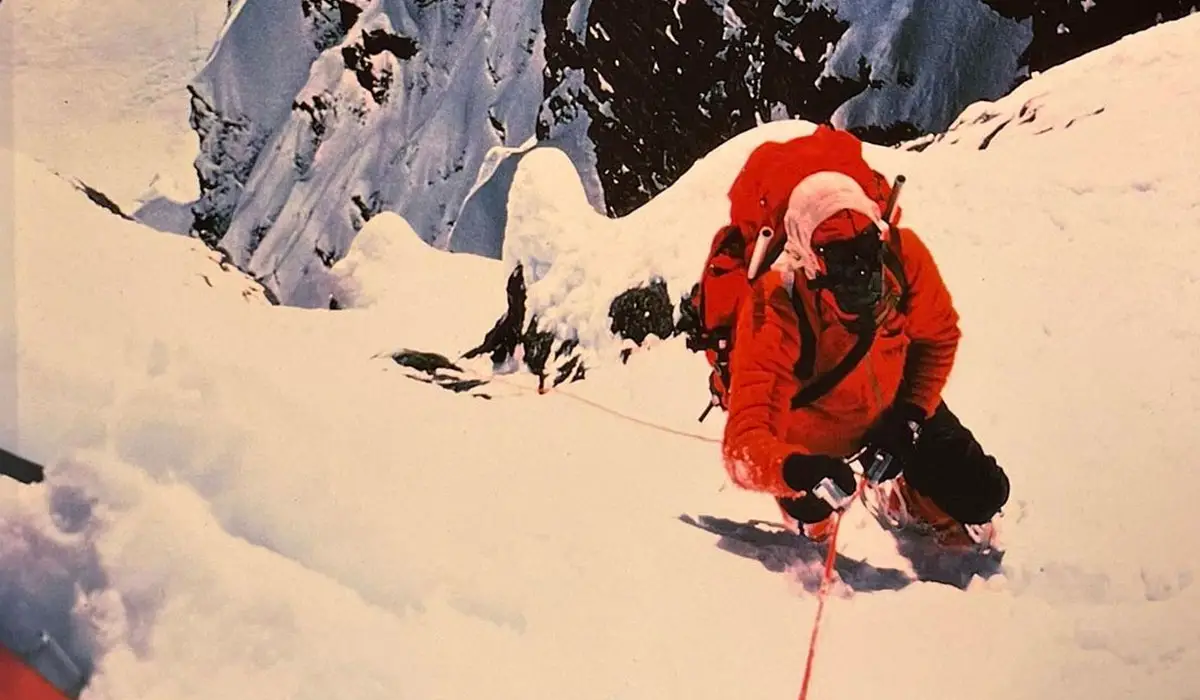
Mick Burke once again became a part of Chris Bonington’s project. In the year 1975, the team decided to embark on the Everest journey yet again and fulfill their dream of ultimately reaching the top of the Everest.
This time also Burke had to play the dual role of a cameraman and the mountaineer. As previously mentioned, Everest is truly a challenge for any mountaineer out there. The South- West face of Everest is extremely dangerous. It is an ultimate test of one’s dedication and resilience and to check whether they can face challenges or not!
Despite the difficulties and hardships, the captain of the team Chris Bonington believed that the South – West face could be achieved and conquered. Chris Bonington made sure to assemble his “dream team” of elite mountaineers who he believed could embark on the challenge.
The dual role of a climber and a cameraman set up Mick Burke for challenges. The inevitable weight of the camera gears and equipment like film reels and batteries added a substantial weight on his body as he ascended higher altitudes, especially in the icy, slippery and steep slopes and elevations.
One of the major challenging parts of high altitude filmmaking is having to deal with extreme environments. The thin air and lack of Oxygen are huge difficulties amongst the mountaineers now imagine having to do that with cameras and weight it carried.
As the team kept climbing higher altitudes, the surroundings started to become harsher and more challenging. Burke’s camera gathered frost over them, batteries stopped performing well but despite that he carried on with his job of capturing the raw and real footage of the journey.
The 1975 expedition faced a lot of challenges. The climb was not easy and the weather was not supportive. Yet again, the team had to make a difficult decision to return back to the camps without successfully reaching to the top of the summit. It was the wiser option at that time.
Despite the hardships, Burke’s camera kept on capturing the wild dangers.
Working with BBC
While Burke was on the slopes of Everest, back in the United Kingdom, he worked alongside the infamous BBC and their production team. They were set to release a documentary for the audience. The documentary was based on Everest.
The film was named “Everest: The South-West Face”. The document would show the hardships and dangers climbers faced during the brave climbing of the Everest. It was not just a mere documentary but rather an emotional and physical journey towards the Everest.
Tragedy of 1975 Everest Expedition
The journey back to the base was tragic for the team. The weather became unpredictable and went from being good to the actual worst.
The team lost Mick Burke and just like that he went missing. Right after losing contact with Mick Burke, the weather started to become worse. It is said that Mick Burke was last seen near the summit but everything at that moment happened so quickly that within a few hours the strong storms affected the team.
The weather started to deteriorate and the storms hit so hard that the climbing partners could not rescue Mick Burke. They tried to find him but he was not found. The storm lasted a couple of hours, the team went to their camp and right after the storm ended, they went on a mission to find Burke again.
They did not know if he was well alive or already dead. They could not find his body, it was nowhere to be found. The team had a limited number of supplies and the communication became unsuccessful.
Mick Burke’s achievements
As a heartfelt tribute to the incredible determination of Mick Burke, the BBC in collaboration with the Royal Geographic society created the Mick Burke award. The award is given to support young mountaineers who decide to embark on journeys through the mountains in the hardships.
In addition to that, a local charity called the Mick Burke Memorial was founded. The trust aims to support and recognise pioneering mountaineers.
Mick Burke’s extraordinary career and legacy lives through, still now, even after years of his disappearance!
